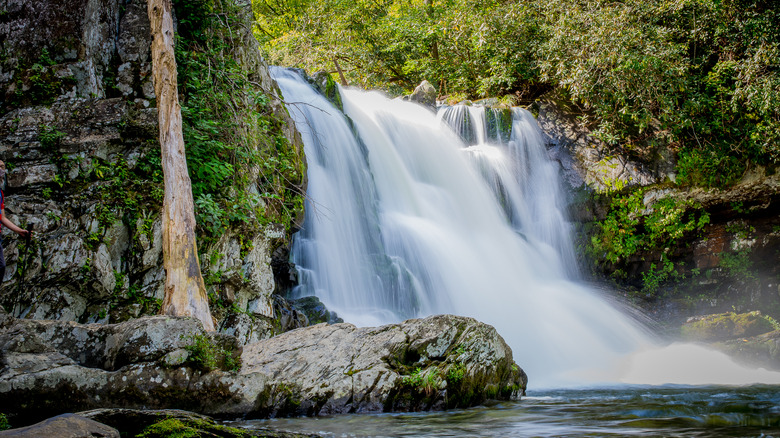Travel Guides Outdoor Adventures Hiking
Kylie McCreary
When most people think of Tennessee, they think of its iconic entertainment capitals of Nashville and Memphis. However, many people would be surprised to find that beyond those bustling metropolises, Tennessee is home to a beautiful pocket of the country’s natural landscape. From the Blue Ridge Mountains to the Mississippi River, Tennessee is covered in stunning wilderness sights.
Because of this, Tennessee is a fabulous destination for hiking fanatics. Due to the state’s high volume of rivers and streams, there are abundant opportunities for visitors to hike to breathtaking waterfalls. One of Tennessee’s many popular waterfalls to hike to is Abrams Falls. The main hiking trail to the waterfall is a moderate 2-hour journey —doable for the many people. At first thought, this probably sounds 100% worth it for the chance to see the stunning waterfall at its end. However, you might take a second thought about heading up to Abram Falls considering this journey is an especially dangerous (and deadly) one.
About Abrams Falls

Eddie J. Rodriquez/ Shutterstock
At the height of the tourist season, about 1,000 people a day will make the hike to Abrams Falls. Located in the northwestern corner of the Great Smoky Mountains National Park, the land was originally inhabited by the Indigenous Cherokee people. In fact, Abrams Falls is named after a Cherokee Chief named Oskuah who lived close to the waterfall and later in life changed his name to “Abram.” The area gets an ample amount of rainfall, with 55-85 inches per year, making for a lush environment.
Of all the waterfalls in the park, Abrams Falls funnels the highest volume of water through its channel. While it is only 20 feet in height, the sheer quantity of high-speed water is enough to inspire awe. Along the 2.6-mile path to the destination, hikers twist and turn through verdant pine-oak, rhododendron, and hemlock forests. With just a 616-foot elevation gain, the incline and length of the hike are doable for most people. What’s not doable for many is navigating the slippery steps and stones along its path.
Why Abrams Falls is extremely dangerous

Jim Vallee/ Shutterstock
While the mountainous rainfall provides a beautiful green background for the hike to Abram Falls, it also provides slick terrain and a treacherous current beneath the waterfall. As a result, these obstacles have caused an alarming number of deaths since 1930. For that reason, in 2008, Backpacker Magazine named it one “The 10 Most Dangerous Hikes in America,” and it hasn’t done much to dispute that reputation since then: In 2021, Georgia NBC affiliate WBIR reported that there have been more than 60 drownings in the park’s streams, with 10 occurring near Abrams Falls.
While the hike itself is not difficult, you’ll be remiss to wear shoes without sufficient traction. Not only will you want footwear with a solid grip, but you’ll also want to be extra conscientious of where you take your steps. Getting distracted or acting hastily could lead to a fatal fall. In addition, you’ll want to dismiss any temptation to take a dip in the pool of water beneath the waterfall. The National Park Service warns, “Due to strong currents and an undertow, swimming in the pool at the base of the falls is extremely dangerous. Swimmers have drown [sic] here! Don’t be the next victim!” Suffice it to say, you’ll want to take things nice and slow (and stay clear of the water) if you attempt this hike.

